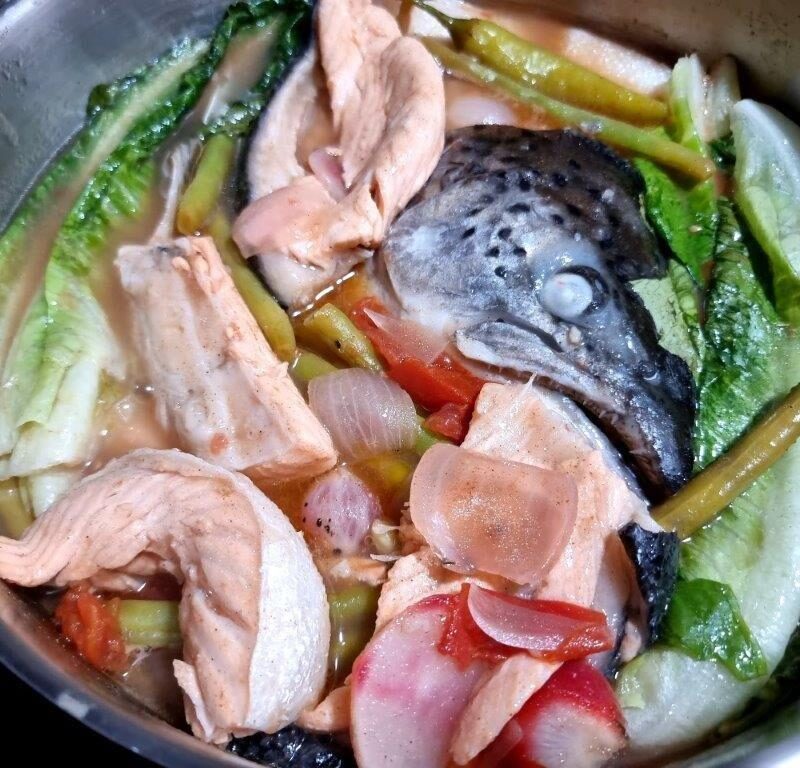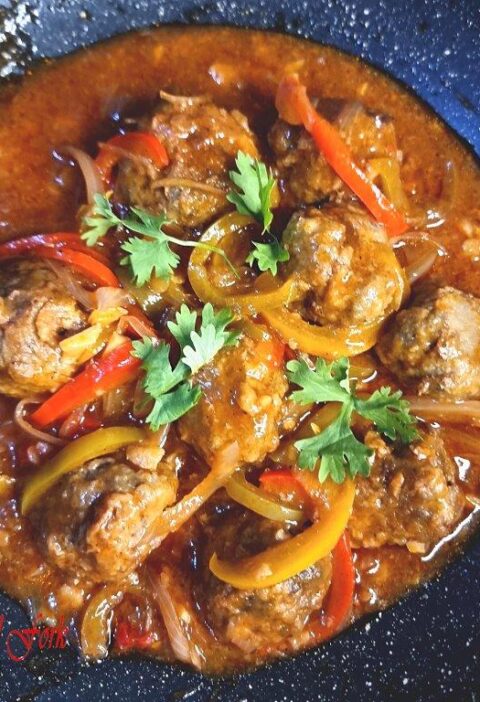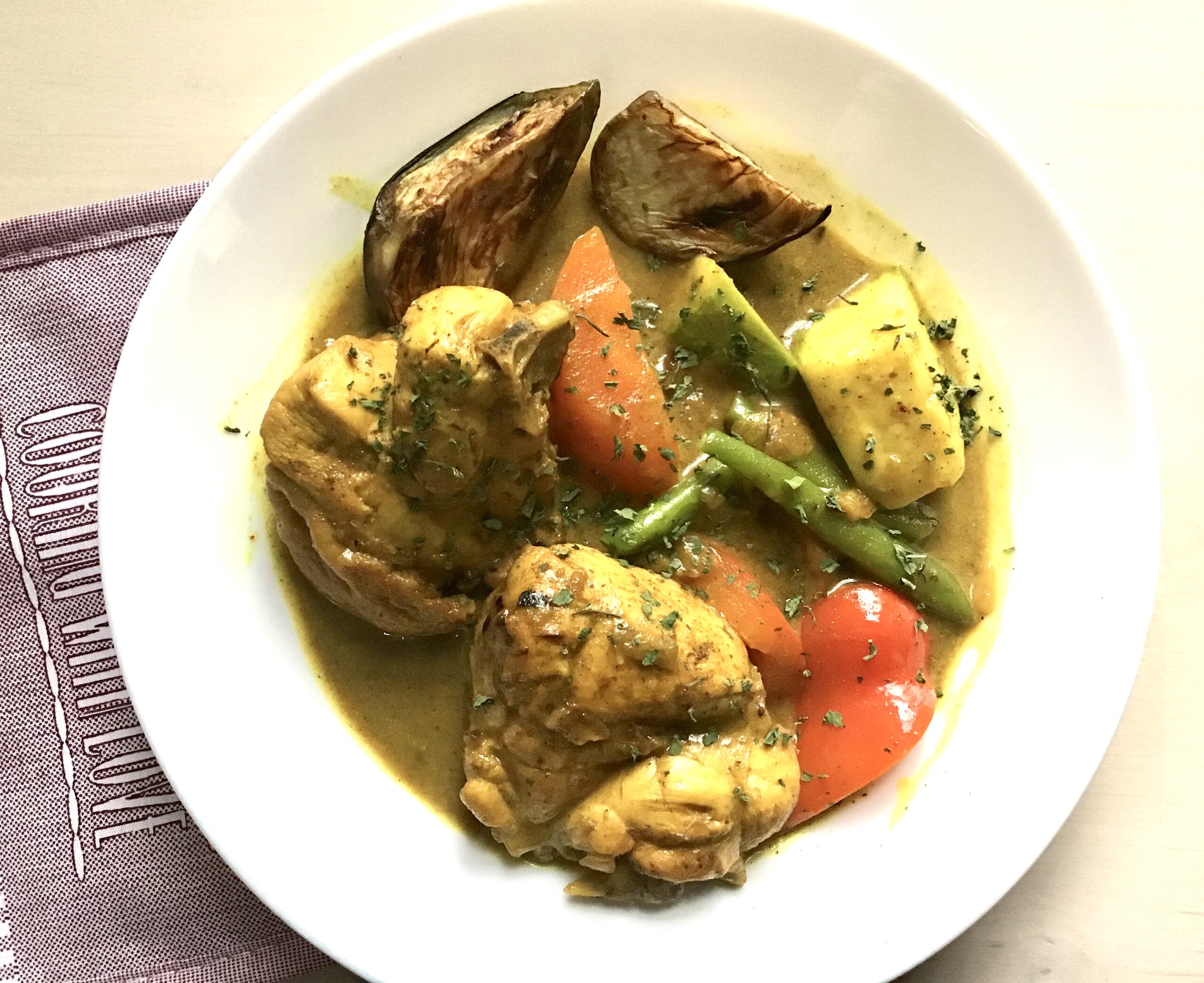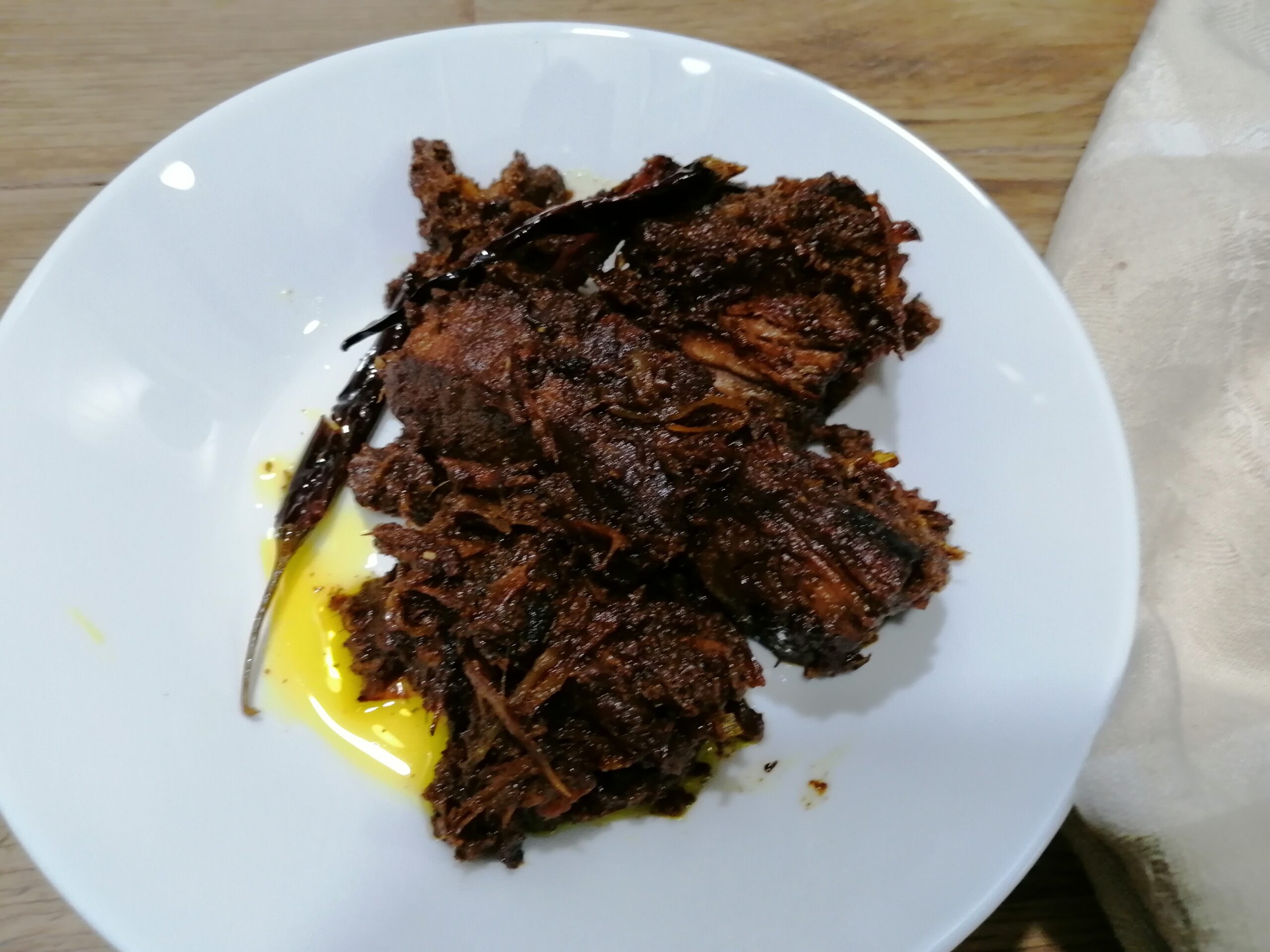This salmon belly sinigang is not the the traditional way of cooking fish sinigang without sacrificing the sour-goodness of the dish. I said “not traditional” because it is quick and, therefore, easy as I took the ingredients straight from the refrigerator to satisfy an instant craving. As you would see, this results in vegetables that are not the “usual” types:
- I used the round and pinkish salad radish called Cherry Belle radish to replace the long whitish cooking Daikon radish
- I replaced the string beans with green beans (Baguio beans, as it is also called in the Philippines)
- I ventured on lemon as souring agent replacing either the popular tamarind, or the next-in-line calamansi or kamias.
- Finally, I used romaine lettuce to replace the traditional kangkong or water spinach
- Ah, before I forget, I included the heads with the belly. This should have been titled “salmon belly and heads sinigang.”
The kids and I enjoyed it, so we will do this again. And the next best thing, of course, is to share the recipe with you.
Ingredients at a Glance
Salmon belly
Salmon belly is the fatty cut from the underside of the salmon fish, with a rich texture and flavor due to its high omega-3 fatty acid content. It is perfect for grilling, crisping up, or simmering in stews and this cut provides a melt-in-the-mouth experience.
Lemon
Lemon is an excellent souring agent and is equal to tamarind for sinigang. I got to find that out some decades ago when I started living in Saudi Arabia and found out, to my panic, that the distinctive sour taste (of tamarind, that is) that I was used to is not as abundant in the desert land.
By the way, although I use tamarind (or its powder form) when it becomes available, I still add the juice of one lemon to my sinigang to add an extra flavor to that already flavorful broth.
Vegetables and seasonings
The usual lineup of sinigang vegetables:
- Leafy Greens: Typically, water spinach (kangkong) is the green star of sinigang. As already mentioned, I used romaine lettuce in this recipe. I equally offers that delightful crunch and a vibrant touch to the soup.
- Veggies Galore: Hearty pieces of okra, taro (gabi), radishes (labanos), and eggplant bring texture and layers of flavor. Don’t forget the green chili, which adds a subtle heat that tickles your palate without overwhelming the dish.
- Aromatic Seasonings: A base of sautéed onions and ripe tomatoes lay the foundation for an aromatic and flavorful broth.
- The Flavor Enhancers: Fish sauce is the secret weapon for that umami punch. Season with salt sparingly, and be generous with the fish sauce to dial up the savoriness.
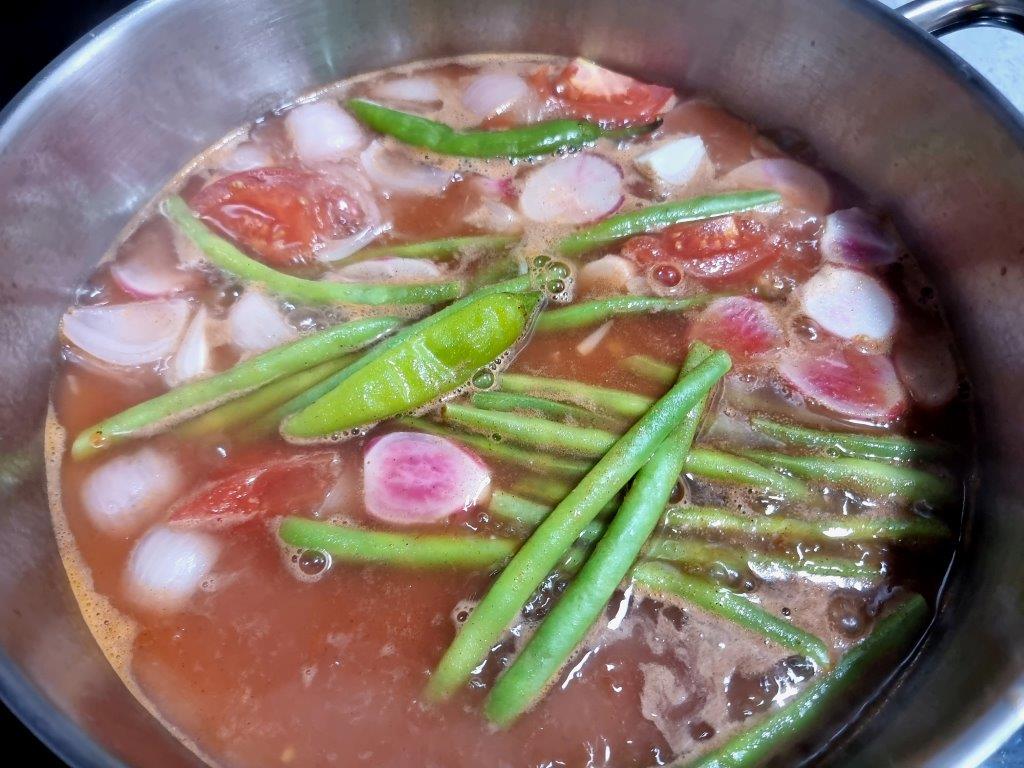
Tips for enhancing the flavor of salmon belly sinigang
Alright, let’s uncover some tips that’ll take this Filipino classic from good to great.
Using homemade broth. The secret to a mouth-watering bowl of sinigang lies not just in the sour base but also in the depth and richness of the broth. Instead of reaching for store-bought broths or bouillon cubes, try making your broth from scratch. It’s like laying down a red carpet for all the other ingredients—the salmon sinigang truly shines when it swims in a flavorful broth that’s been lovingly simmered.
Making your broth may include the following:
- Fish bones: Simmer these with your seasonings for a full-bodied flavor.
- Vegetable scraps: Don’t throw away those carrot tops or celery ends—use them to add complexity to the broth.
- Seasonal aromatics: Add young onions, spring garlic, or whatever are fresh and available.
Cook the broth on a medium heat to coax out every ounce of flavor.
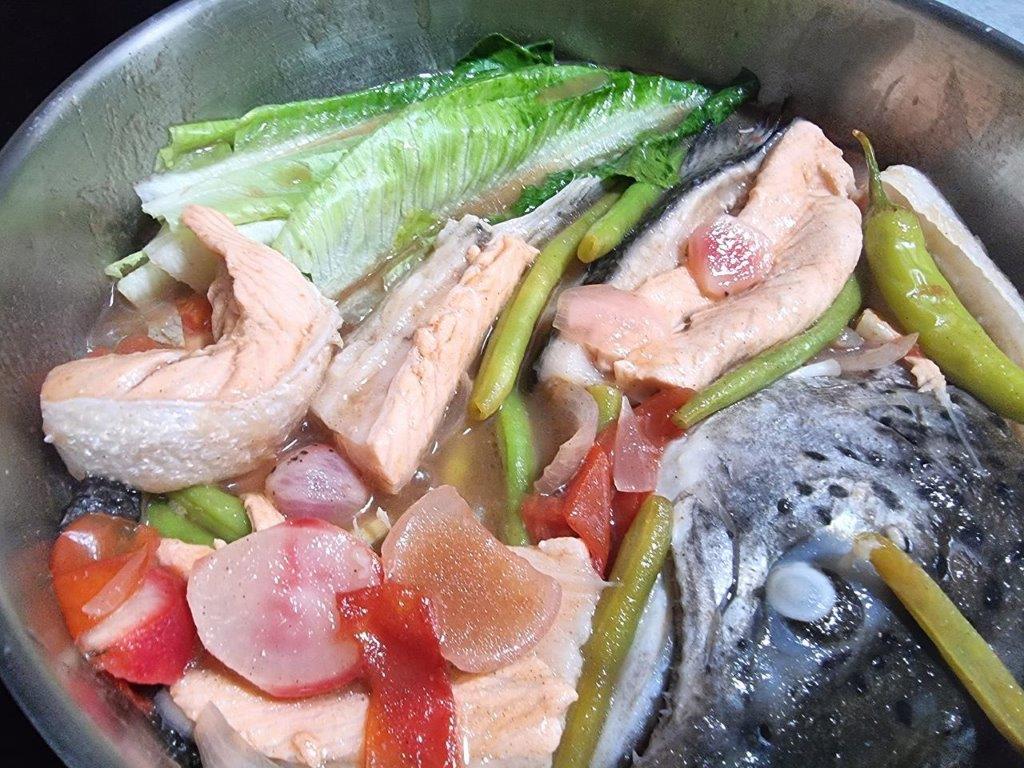
Serving suggestions for salmon belly sinigang
You can’t talk about sinigang without mentioning its soulmate — steamed rice. The fluffy, warm grains are perfect for soaking up that tamarind broth and are practically essential for a complete Filipino dining experience. Imagine scooping a bit of steamed rice into your hot bowl of sinigang, making sure to drench it with the sour soup. Do not be shy in you “whoaaa” or “wow” when you find the bite harmonizing the flavors and textures of salmon belly and the sour broth.
Properly storing leftovers
Storing leftovers correctly is key to enjoying your delicious meals for a bit longer without risking a food-borne illness. Start by letting your food cool down slightly—yeah, I know, you might be tempted to chuck it in the fridge straight away, but hear me out. You don’t want it steaming up the inside of your fridge, as this can raise the temperature and mess with your other food’s vibes.
Once it’s not hot lava temp anymore, but still warm (because you don’t want it hanging out in the danger zone for bacteria growth), get it into shallow, airtight containers. The shallow part is important because it allows the food to cool evenly and quickly.
Now, you might be thinking, “How long can I leave my tasty takeout in the fridge?” Generally, you’ve got about three to four days to revisit that yumminess. If you can’t get to it within that window, consider freezing it, extending its life by months. And when reheating, heat it till it’s hot and steaming – it just tastes better and it’s safer.
For that hot bowl of sinigang or any soup, for that matter, get it in the fridge within two hours of cooking. And always, always, I mean, ALWAYS, remember to label your leftovers with the date. Keeping track of how long they’ve been sitting in the fridge is pretty crucial unless you fancy playing food poisoning roulette.
Happy leftover-ing, folks! Just follow these simple steps for safely storing your meals, and you won’t have to worry about your sinigang na salmon or any other dish turning into something less than delightful.
Print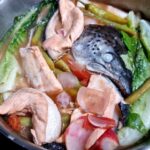
Salmon Belly Sinigang in Less Than 30 Minutes
- Prep Time: 10 minutes
- Cook Time: 15
- Total Time: 25 minutes
- Yield: 3 servings 1x
- Category: Main dish
- Method: cooking
- Cuisine: Filipino
Description
Quick salmon belly sinigang using vegetables that replaces the usual kangkong, labanos, sitaw, and the tamarind souring agent by using alternative choices available in your pantry.
Ingredients
500g salmon belly (or belly and heads)
2 medium sized onions, quartered
1 medium-sized tomato, quartered
2 cups lemon juice (3–4 lemons)
3–4 pieces cherry bell radish (or Daikon radish,of course)
100g green beans
1 bunch of romaine lettuce
1–2 Serrano chili
1 tsp salt
4 tbsp fish sauce
3 cups water
Instructions
- Instructions:
- Place water, onions, and tomatoes in a cooking pot and let boil.
- Add radish, green beans, and Serrano chili, and cook for another 2 minutes.
- Add the salmon bellies (and heads, if using) followed by the juice of lemons, salt, and
- fish sauce.
- Lower the heat, cover the pot, and continue cooking until the fish are completely heated.
- Add romaine lettuce. Sink them into the broth by pressing them down with a ladle. Turn the heat off and remove the pot from the stove (as it would continue to cook otherwise).

